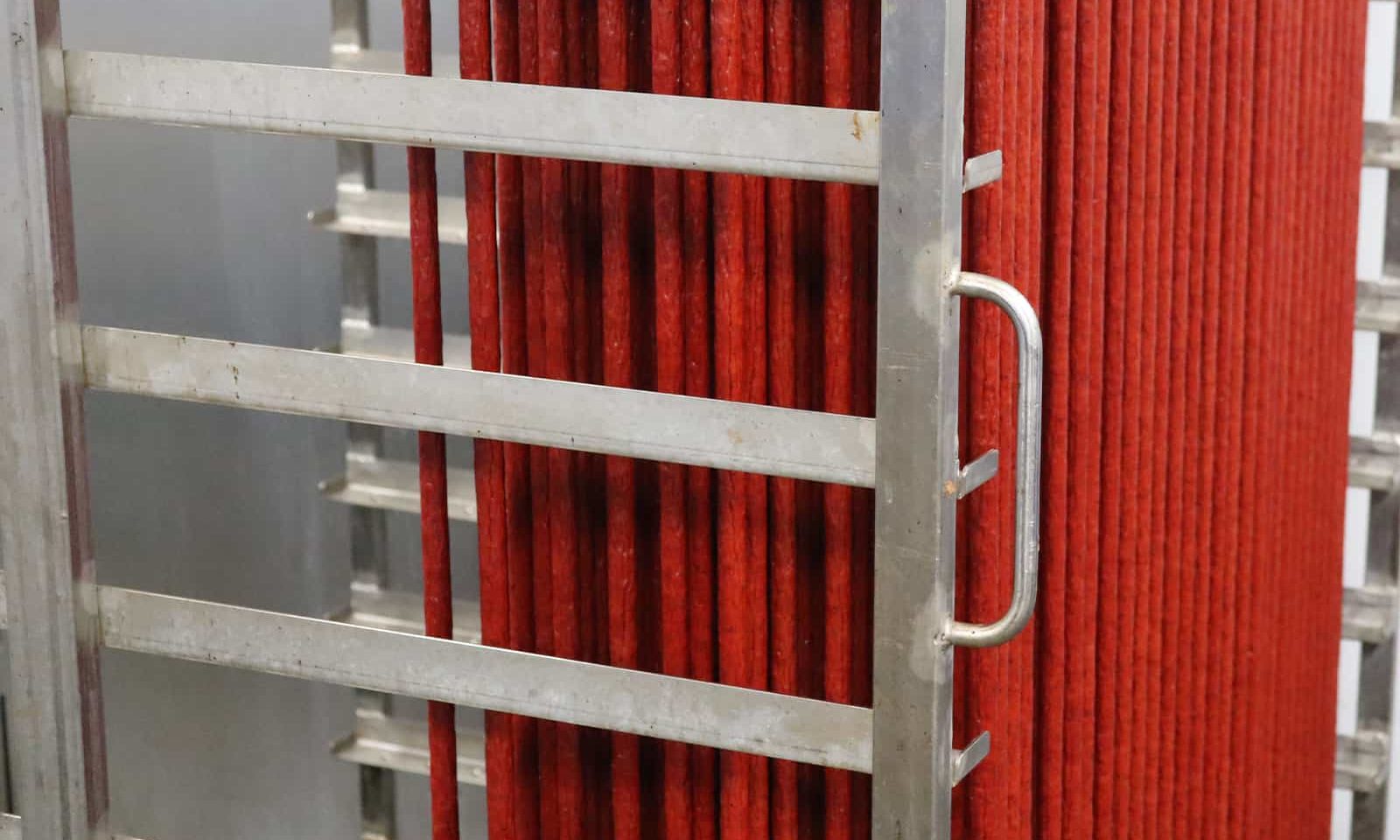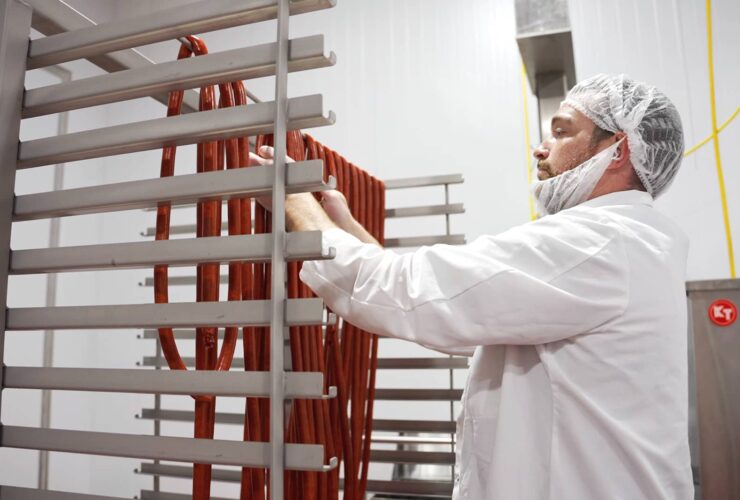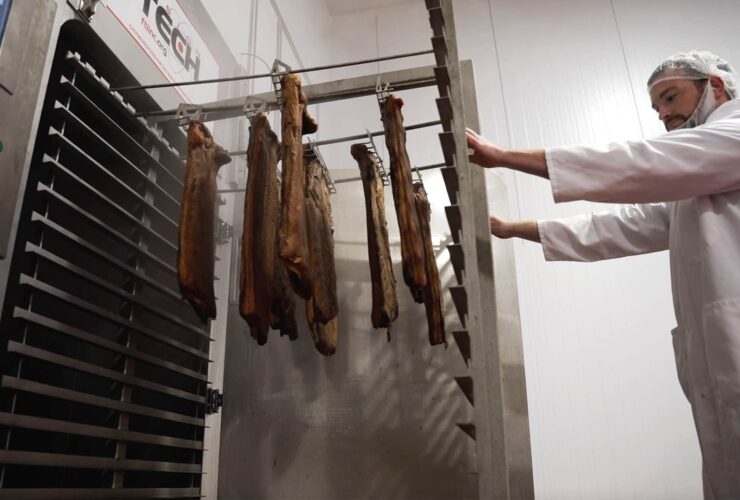Despite supply issues, the popularity of meat sticks remains on the rise.
In 2021, processors made a combined total of over $1.83 billion in sales for meat snacks at convenience stores alone– with meat sticks as the leading category. That’s up from $466 million in 2015 – almost a 1.5 billion dollar increase in six years!
Clearly, Americans love their meat sticks.
This sudden growth in popularity has left processors looking for ways to optimize their meat stick operation — to grab a larger share of the industry, outprice the competition, and make more money.
More specifically, it has put a lot of pressure on processors to improve yields and consistency in order to compete for those dollars.
Improving Beef Stick Yields & Consistency
The best way to improve yields and consistency in your beef sticks product starts with your cook cycle.
The way you space the beef sticks before cooking, how you load the oven, and the cooking recipe you use will make all the difference. Get those wrong, and your product won’t cook evenly — which results in some being darker and dryer and some being lighter and moister in the same batch.
Achieving consistent yields and coloring on every screen in the oven is possible if you follow these tips.
Spacing Between Sticks
Paying attention to proper spacing between the meat sticks before loading the oven is crucial.
Too much product on a single cart will negatively affect the coloring and consistency of your product. Crowded product, especially when they are in direct contact with each other, causes two-tone coloring.
On the other hand, there may be times where you may need to only run a partial batch– make sure that even at those times the product is evenly spaced over the total number of carts that fit into your smokehouse.
This will give you the same yields and consistency you’re used to when cooking a full batch.
Bottom line: always take the quantity you have and equally load it across each cart.
Loading the Oven
We broke down the science of how to load your oven in this post, so we won’t regurgitate it here. Just make sure you’re following these basic tips:
- Fully load the oven, even if the trucks aren’t fully loaded. It helps with airflow.
- Keep trucks 12″ from the oven walls and 6-8″ away from each other (in double-wide ovens)
- Keep product a minimum of 12″ from the oven floor
- Fully load the truck, if possible, but don’t overload
- Evenly space product over every truck
- Avoid large, empty areas in the oven
Practice Step Cooking
Step cooking is the process of slowly increasing the cooking temperature over a period of time to retain purge. Rather than starting the cooking process at 170°F, start the process at 100°F and work up to 170°F over the course of a few hours.
Step cooking prevents beef from giving up outside moisture too quickly and retains a greater amount of purge.
Sample Cooking Recipes
Below are sample cooking recipes our meat scientists put together. Use these as a starting point and adjust as necessary to get the results you want.
[av_table purpose=’tabular’ pricing_table_design=’avia_pricing_default’ pricing_hidden_cells=” caption=” responsive_styling=’avia_responsive_table’ alb_description=” id=” custom_class=” template_class=” av_uid=’av-649i8fy’ sc_version=’1.0′] [av_row row_style=’avia-heading-row’ av_uid=’av-imzcw5a’][av_cell col_style=’avia-desc-col’ av_uid=’av-i79knz2′]Step[/av_cell][av_cell col_style=” av_uid=’av-hv68ify’]Time[/av_cell][av_cell col_style=” av_uid=’av-hdm6qn2′]Dry Bulb[/av_cell][av_cell col_style=” av_uid=’av-gqoky2m’]Web Bulb[/av_cell][av_cell col_style=” av_uid=’av-1n402fy’]Relative Humidity[/av_cell][av_cell col_style=” av_uid=’av-g20ehtq’]Dampers[/av_cell][av_cell col_style=” av_uid=’av-fm2820u’]Smoke[/av_cell][/av_row] [av_row row_style=” av_uid=’av-exovozi’][av_cell col_style=’avia-desc-col’ av_uid=’av-1gcbcji’]1[/av_cell][av_cell col_style=” av_uid=’av-e1ey4se’]6-8 hours (to pH)[/av_cell][av_cell col_style=” av_uid=’av-djacwm6′]100°F[/av_cell][av_cell col_style=” av_uid=’av-db4d23i’]98°F[/av_cell][av_cell col_style=” av_uid=’av-ctj4f32′]91%[/av_cell][av_cell col_style=” av_uid=’av-c921s66′]Closed[/av_cell][av_cell col_style=” av_uid=’av-br5wwse’]—[/av_cell][/av_row] [av_row row_style=” av_uid=’av-bdl66am’][av_cell col_style=’avia-desc-col’ av_uid=’av-awnv5su’]2[/av_cell][av_cell col_style=” av_uid=’av-ajzmoxq’]1 hour[/av_cell][av_cell col_style=” av_uid=’av-a07uz8e’]140°F[/av_cell][av_cell col_style=” av_uid=’av-9ex2t8e’]125°F[/av_cell][av_cell col_style=” av_uid=’av-8w8d4ta’]65%[/av_cell][av_cell col_style=” av_uid=’av-vc0ese’]Auto[/av_cell][av_cell col_style=” av_uid=’av-80yc0e6′]—[/av_cell][/av_row] [av_row row_style=” av_uid=’av-7r2jda6′][av_cell col_style=’avia-desc-col’ av_uid=’av-6xx4qf2′]3[/av_cell][av_cell col_style=” av_uid=’av-6uu3e3i’]2 hours[/av_cell][av_cell col_style=” av_uid=’av-63ux44e’]160°F[/av_cell][av_cell col_style=” av_uid=’av-5q66rvi’]125°F[/av_cell][av_cell col_style=” av_uid=’av-53xph1a’]35%[/av_cell][av_cell col_style=” av_uid=’av-4xghzdq’]Auto[/av_cell][av_cell col_style=” av_uid=’av-4doujzy’]—[/av_cell][/av_row] [av_row row_style=” av_uid=’av-40evrjy’][av_cell col_style=’avia-desc-col’ av_uid=’av-3h2plwe’]4[/av_cell][av_cell col_style=” av_uid=’av-2wrj5vi’]To desired yield[/av_cell][av_cell col_style=” av_uid=’av-2coe2im’]170°F[/av_cell][av_cell col_style=” av_uid=’av-6ydby6′]125°F[/av_cell][av_cell col_style=” av_uid=’av-1qdpgqm’]27%[/av_cell][av_cell col_style=” av_uid=’av-183tha6′]Auto[/av_cell][av_cell col_style=” av_uid=’av-ltsg9q’]—[/av_cell][/av_row] [/av_table]
Make Better Beef Sticks
Still struggling to improve yields and consistency in your beef stick process? Our team is happy to consult with you to help dial in your operation and improve your processes. Simply request a quote today and we’ll get you on the path to making better beef sticks.




